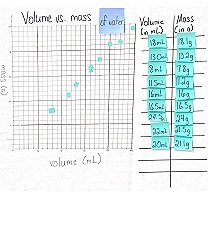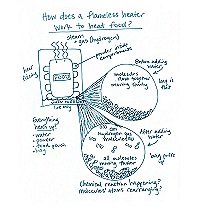EINSTEIN PROJECT CURRICULUM OPTIONS
OPEN SOURCE SCIENCE EDUCATION
Seventh Grade
How can we make something new that was not there before?
7.1 chemical reactions & matter
14 lessons | 25 days of instruction
This unit on chemical reactions and matter transformations begins as students consider what happens to a bath bomb when it is added to water. This and related phenomena (where adding a solid to water resulted in gas bubbles appearing) leads to a broader set of students’ questions around: How can we make something new that was not there before?
Learn more in the Unit Storyline
Single Kit | $344
All materials for 1 class
Multi Kit | $481
Materials for 6 sections
Add-On | $187
Consumables for 1 class
How can we use chemical reactions to design a solution to a problem?
7.2 chemical reactions & energy
10 lessons | 21 days of instruction
Students are introduced to the anchoring phenomenon—a flameless heater in a Meal, Ready-to-Eat (MRE) and collect evidence to support the idea that these heaters are undergoing chemical reactions as they get warm. Students have an opportunity to reflect on the engineering design process, defining stakeholders, and refining the criteria and constraints for the design solution. Students design homemade heaters designs and go through a series of iterative testing and redesigning.
Learn more in the Unit Storyline
SINGLE KIT | $318
All materials for 1 class
MULTI KIT | $673
Materials for 6 sections
ADD-ON | $164
Consumables for 1 class
How do things inside our bodies work together to make us feel the way we do?
7.3 metabolic reactions
15 lessons | 29 days of instruction
This unit on metabolic reactions in the human body starts out with students exploring a real case study of a middle-school girl named M’Kenna, who reported some alarming symptoms to her doctor. Her case sparks questions and ideas for investigations around trying to figure out which pathways and processes in M’Kenna’s body might be functioning differently than a healthy system and why. Through this work of figuring out what is causing M’Kenna’s symptoms, the class discovers what happens to the food we eat after it enters our bodies and how M’Kenna’s different symptoms are connected.
Learn more in the Unit Storyline.
SINGLE KIT | $305
All materials for 1 class
MULTI KIT | $498
Materials for 6 sections
ADD-ON | $156
Consumables for 1 class
Where does food come from and where does it go next?
7.4 matter cycling & photosynthesis
15 lessons | 29 days of instruction
Students reflect on what they ate for breakfast and consider which breakfast items might be from plants. This discovery leads them to wonder how plants are getting these food molecules and where a plant’s food comes from. Students explain that the pieces of their food are constantly recycled between living and nonliving parts of a system.
Learn more in the Unit Storyline.
SINGLE KIT | $317
All materials for 1 class
MULTI KIT | $435
Materials for 6 sections
ADD-ON | $129
Consumables for 1 class
How does changing an ecosystem affect what lives there?
7.5 ecosystem dynamics
20 lessons | 33 days of instruction
This unit on ecosystem dynamics and biodiversity begins with students reading headlines that claim that the future of orangutans is in peril and that the purchasing of chocolate may be the cause. Students then examine the ingredients in popular chocolate candies and learn that one of these ingredients--palm oil--is grown on farms near the rainforest where orangutans live. This prompts students to develop initial models to explain how buying candy could impact orangutans.
Learn more in the Unit Storyline.
SINGLE KIT | $208
All materials for 1 class
MULTI KIT | $247
Materials for 6 sections
ADD-ON | $73
Consumables for 1 class
HOW DO CHANGES IN EARTH’S SYSTEM IMPACT OUR COMMUNITIES AND WHAT CAN WE DO ABOUT IT?
7.6 EARTH’S RESOURCES & HUMAN IMPACT
18 lessons | 33 days of instruction
This unit on Earth’s resources and human impact begins with students observing news stories and headlines of drought and flood events across the United States. Students figure out that these drought and flood events are not normal and that both kinds of events seem to be related to rising temperatures. This prompts them to develop an initial model to explain how rising temperatures could cause both droughts and floods and leads students to wonder what could cause rising temperatures, too. This initial work sets students up to ask questions related to the query: How do changes in Earth’s system impact our communities and what can we do about it?
Learn more in the Unit Storyline.
SINGLE KIT | $251
All materials for 1 class
MULTI KIT | $296
Materials for 6 sections
ADD-ON | $91
Consumables for 1 class































